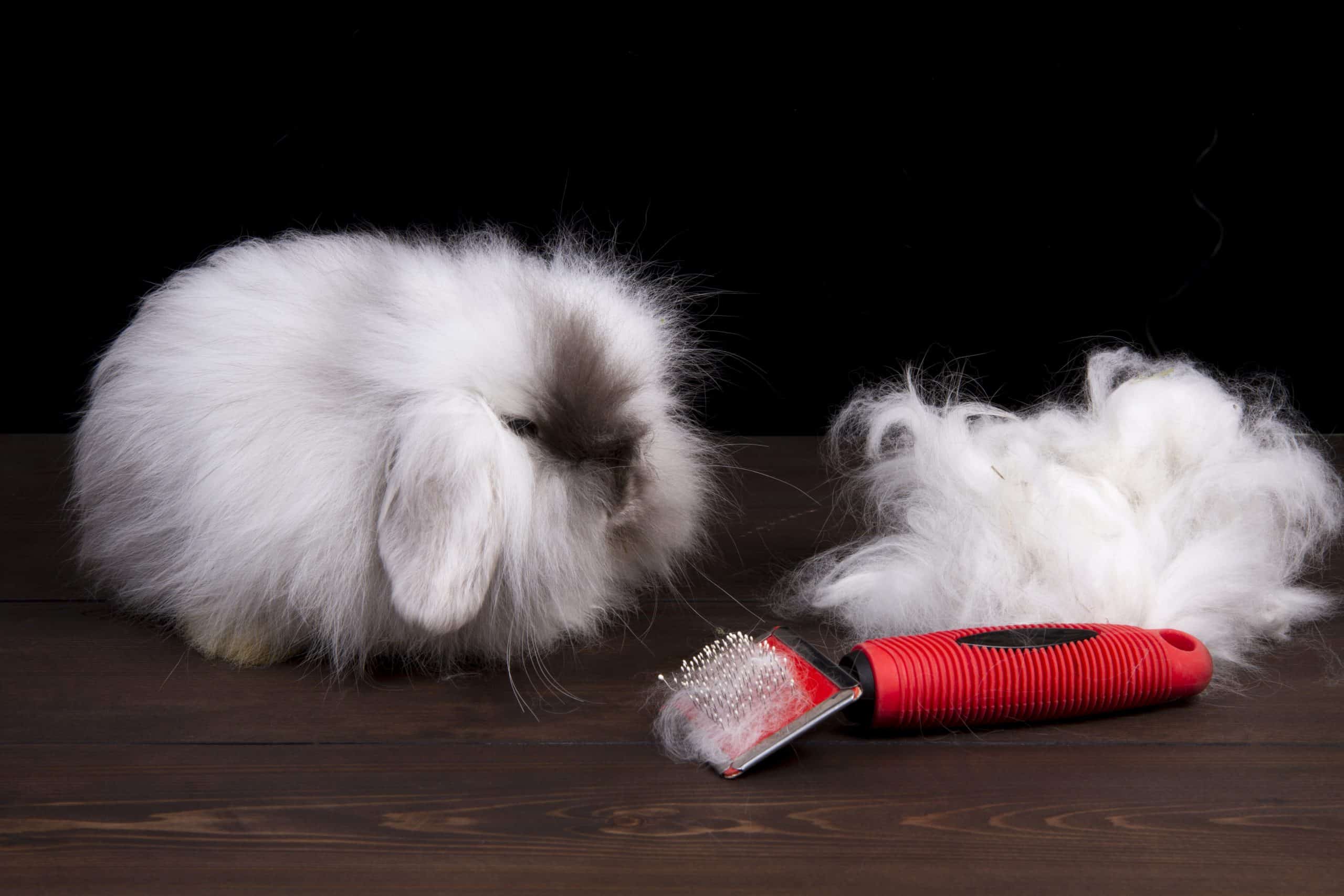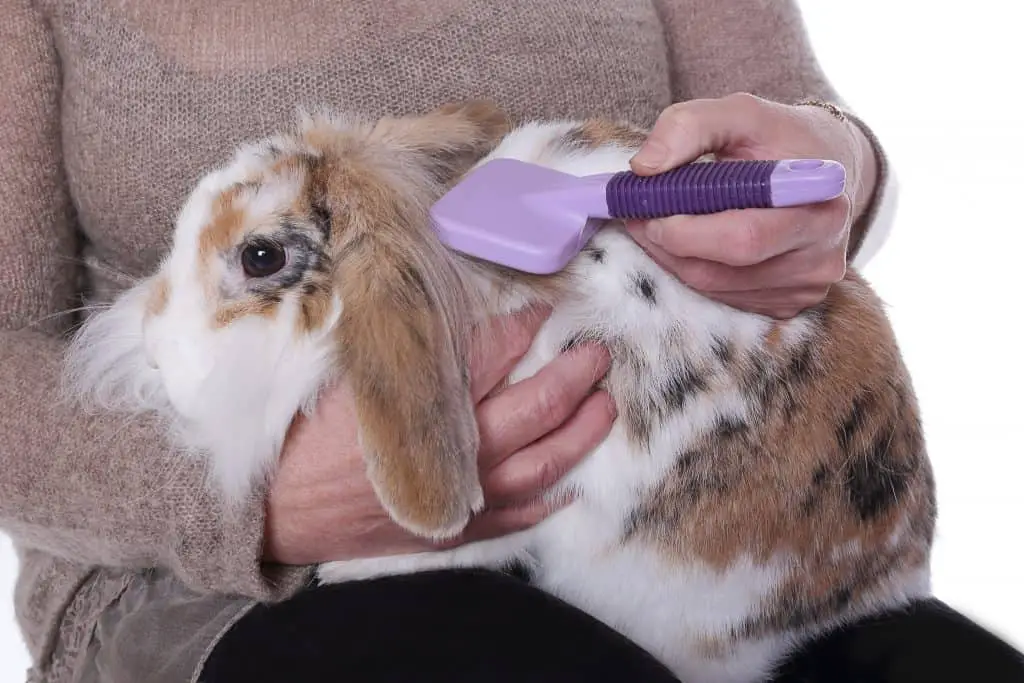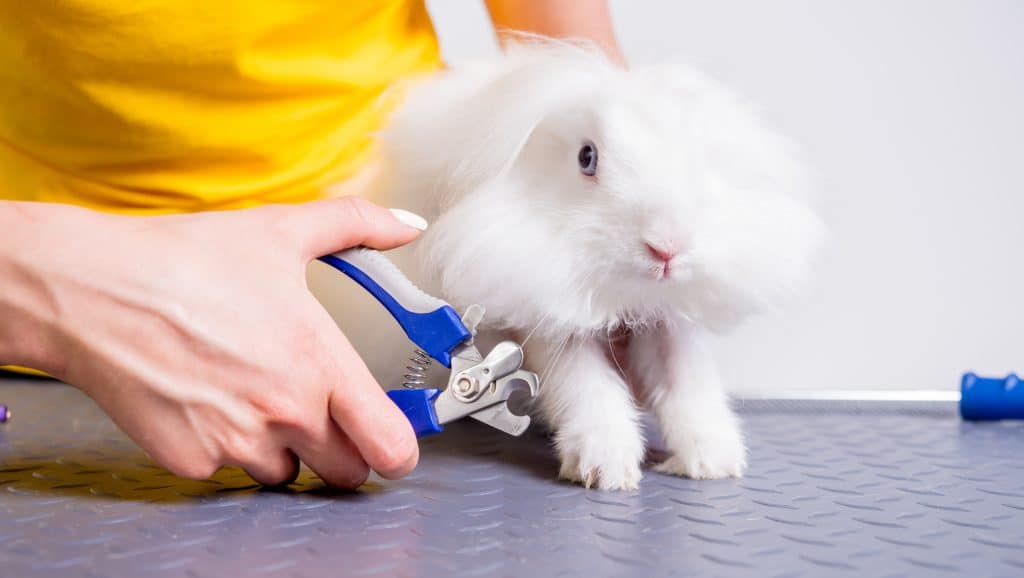Rabbits are meticulous groomers. They are exceptionally skilled when it comes to personal hygiene and they can keep their fur clean and neat on their own however you should learn properly how to clean your pet rabbit.
Especially when it comes to long-haired rabbits or when a good cleaning of their cage is required. All rabbits need routine maintenance every weeks. This includes cutting their toenails, checking for health problems, cleaning their cages, and verifying that their hair is clean and mat-free.
How Important Is It To Clean Up Your Pet Rabbit?
Many people minimize the importance of cleaning their pet rabbits. However, regular cleaning not only helps to keep your pet’s coat in good health condition but can also be beneficial in other ways. These are some of the benefits:
- Keeps your bunny happy and healthy.
- Encourages a thorough examination to help you detect possible diseases or abnormalities in your pet’s body or skin.
- It allows you to create a social bond with your pet. Soon your pet will get used to the grooming routine and will enjoy sharing that time with you.
- Reduce the amount of hair that falls out in the environment, on your clothing, and in your home.
- It prevents your pet from ingesting excessive amounts of hair that can lead to intestinal problems.
Also, keeping the cage clean is part of the hygiene of your bunny. There is no point in grooming your rabbit if it is going to live inside a messy and smelly cage. Despite their self-grooming habits, rabbits still need some assistance from their fellow humans regarding this matter.
Short Haired vs Long Haired Bunnies
For obvious reasons, long-haired rabbits are going to need more attention from us to keep their coat in optimum conditions. Long-haired rabbits, like the Angoras, have long wool that must be groomed or trimmed regularly, and they do not fare well without maintenance.
On the other hand, short-haired rabbits need very little, if any, grooming. However, grooming can be helpful during seasonal molts, as it will help remove the loose coat and accelerate the molting process. Grooming will also reduce the risk of having a blocked intestine from the bunny ingesting its fur while grooming itself.
How to Clean Your Pet Rabbit?
Grooming your rabbit should include brushing, combing, trimming the toenails, as well as examining your pet’s ears, eyes, teeth, scent glands and entire body to ensure that it is in optimal health.
Remember that grooming is the perfect chance to build a strong bond with your pet. If you’re too rough, you could end up hurting him, and your pet will end up fearing or disliking the grooming session.
Brushing and Combing Your Pet Rabbit
Regardless of the coat’s length, brushing can not be missed. Short coat rabbits may need brushing once or twice a week, while longhairs may require daily brushing sessions.
Brushing helps minimize the amount of loose hair around the house and helps prevent intestinal blockages caused by hair ingestion. It also offers the chance to closely examine your pet for parasites, lumps, hair mats, bumps, and other health problems.
How Should it be Done?
Before getting started, place your rabbit on your lap and make sure it is comfortable. You can help yourself with a pin brush, moving it in the direction in which the coat grows to minimize breakage. Stay away from its face, ears, feet, and tail as these areas don’t have a lot of hair.
Rabbits, as many dogs and cats, can also get fleas. You can use a flea comb to check for fleas. These combs also work well on hair matting. You can use mat splitters and mat rakes as well to break fur mats.
Please, be gentle. Your bunny’s skin is very sensitive. Try not to pull your it’s fur while working on the mat. If the mats are severe, please do not hesitate to take the animal to the vet. He will know how to handle it better. Do not try to cut them yourself because you may accidentally cut your rabbit.
Finally, you can use a bristle brush to help you pick up loose hairs and to give the coat more shine.
Clipping the Toenails
Just like our fingernails, rabbits’ toenails are constantly growing. You will want to keep your pet’s toenails trimmed if you want to avoid serious problems. If toenails are not clipped, they will become too long and soon they will begin to cause walking problems. Long toenails could also get stuck anywhere, which may even tear the nail right out of his paw. You will also want to keep your bunny’s toenails trimmed for your own protection.
How to Trim Your Rabbit’s Toenails?
If your rabbit’s claws extend beyond the edge of the fur it means that it is time to cut them. Many rabbits are not comfortable having their nails cut. In such cases, someone else should help you.
Do not use human nail clippers. Guillotine-type nail clippers designed for small dogs and cats work best on rabbit toenails.
Rabbits’ nails have a vein that extends from the toe to almost the tip of the nail. This vein is known as the quick and is noticeable as a dark line on the nail.
Before you begin to trim, you should first examine the nail to determine where the quick is. You should only cut the part of the nail that doesn’t contain the quick as cutting the vein will make the nail bleed. You can use a flashlight to illuminate the vein if the quick is hard to see.
Sometimes we can accidentally cut the vein, causing it to bleed. In these instances, just dab a bit of styptic powder onto the nail, and the bleeding will stop.
Eyes and Ears
You should examine your rabbit’s eyes to make sure there is no discharge or swelling. The ears should also be carefully examined each time bunnies are groomed, to detect signs of parasites, mites, or bacterial infections, especially in breeds with droopy ears. You should also be vigilant for the accumulation of wax, dirtiness, or bad smell.
What Should I Do?
In minor cases of wax and dirt, you can use a cotton swab or cotton ball to remove them. Ask your veterinary for cleaning solutions that can be used for this purpose.
The presence of wax has a protective purpose, so it is not advisable to routinely remove it from a rabbit’s ears. But if the wax gets accumulated, be careful not to push the wax into the ear canal. Never put cotton swabs in the ear canal as they could get stuck inside.
On the other hand, if you notice that your pet’s ear is red, has a crusty discharge, or a bad smell, this may indicate an infection or an infestation with mites. In that case, you should consult your veterinarian for adequate treatment.
Scent Glands
Rabbits have two main scent glands or anal glands. These glands are located in deep creases on either side of the vent area. Scent glands secrete small quantities of a waxy substance with a musky smell. This substance can sometimes accumulate in the folds.
Some rabbits keep this area clean without help, but others do not manage to clean the area effectively. When the substance stars to accumulate, you may notice an unpleasant and penetrating smell. This substance can be wiped away with a cotton swab and mineral oil.
Can I Give my Rabbit a Bath?
Rabbits can manage to stay clean on their own. They rarely need to be bathed. Many rabbit experts agree that it is better not to get them bathed. Bunnies can become extremely stressed and can be exposed to injury, as they will struggle to get out of the water.
You should also remember that rabbits are very fragile. Bathing them makes them susceptible to colds or suffer from sudden drops in temperature, which can be fatal.
Typically, you can manage the need for a bath with a good brushing, a spot treatment, a cornstarch-based baby powder, or waterless shampoos, which you can spray directly onto your pet’s coat.
However, at other times, your rabbit can become extremely dirty, especially its rear end. This can occur if it develops soft stools, or if it gets wet with urine. In these cases, a dry bath will not be enough to clean it.
What To Do When My Rabbit Gets Too Messy?
If your little bunny gets too messy, you’ll have to give him a small bath. Consider washing only the most affected areas.
For this purpose, you can fill a container with 2 to 3 inches of lukewarm water. Submerge the rabbit’s rear end in the water. Be sure not to immerse the whole rabbit. Apply some cat shampoo and clean the affected area gently with a washcloth. Use clean water to remove the shampoo and debris.
Towel dry immediately, as rabbits can quickly become hypothermic. If your rabbit can tolerate it, you can consider using a low set blow dryer to dry it faster.
Your rabbit’s health and lifespan will depend on the love and attention you provide. Good hygiene is fundamental for the upkeep of our pets. A clean rabbit will remain happier for life and will remain free of illnesses and infections.
If grooming your rabbit sounds too overwhelming, you can always take your rabbit to the veterinarian or a grooming expert. If you choose to visit a groomer, make sure he has the expertise in caring for rabbits because these gentle creatures need special handling to prevent them from getting hurt during the grooming process.




